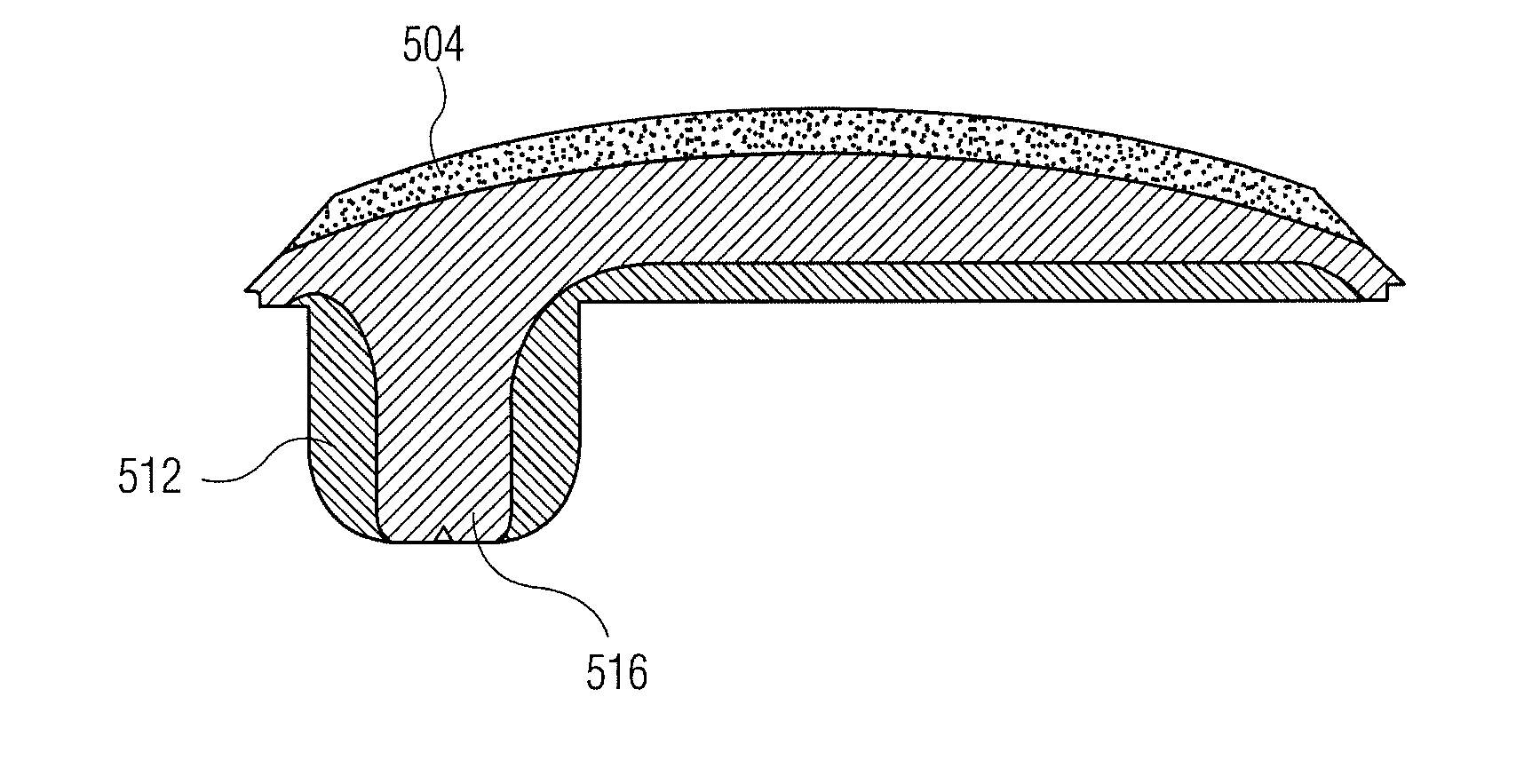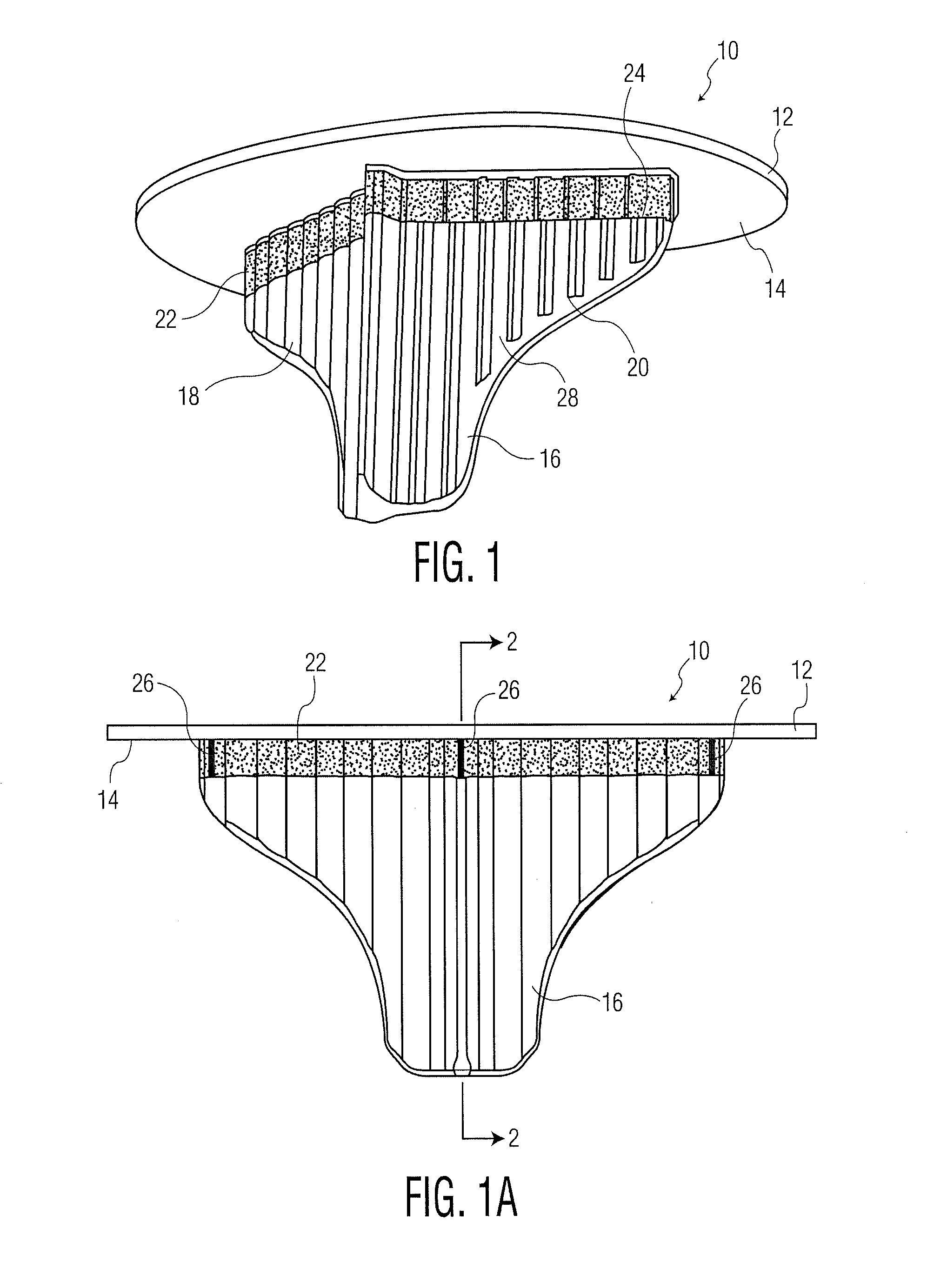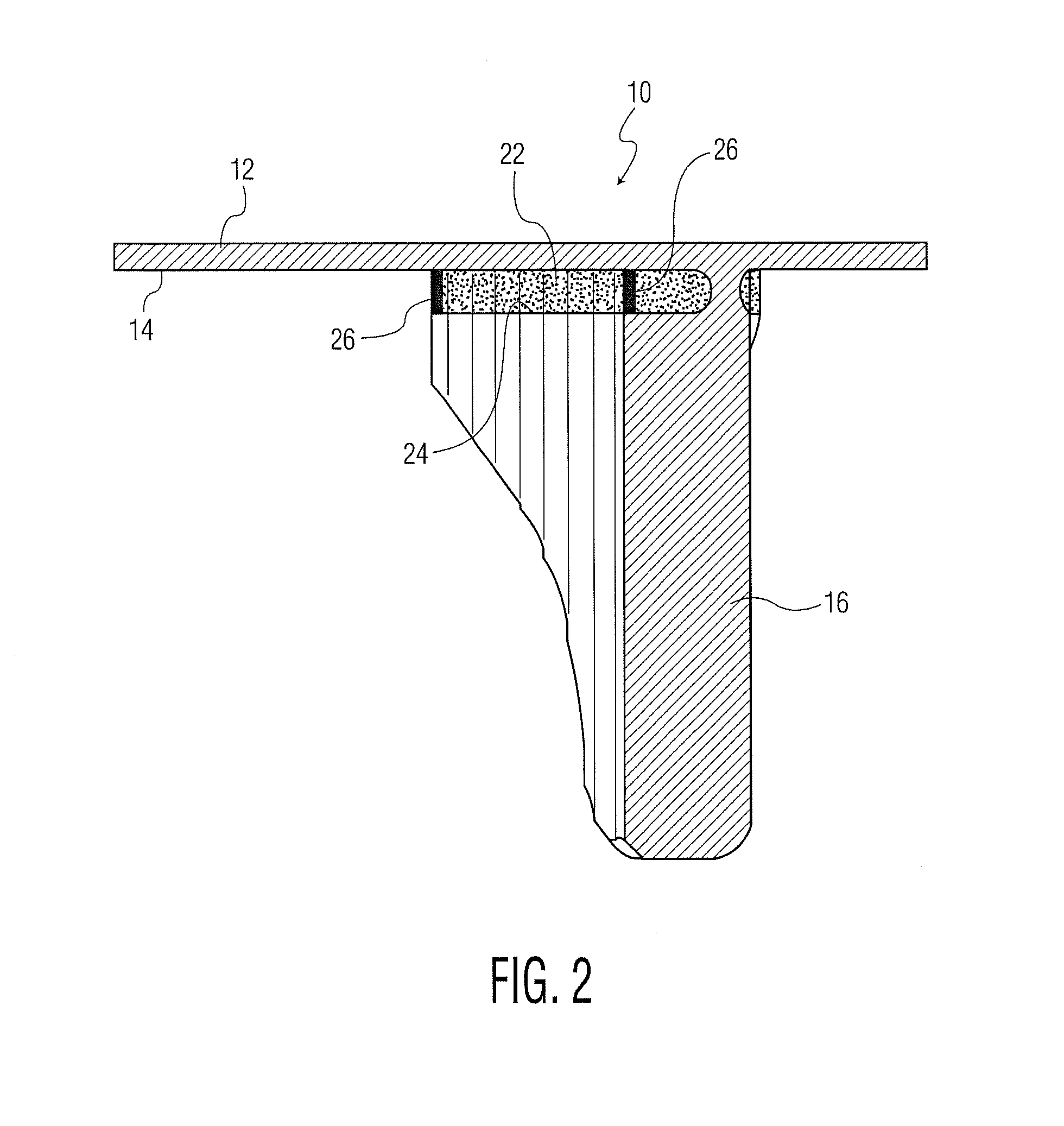Partially porous bone implant keel
- Summary
- Abstract
- Description
- Claims
- Application Information
AI Technical Summary
Benefits of technology
Problems solved by technology
Method used
Image
Examples
example
[0089]The following is a method for making a partially porous implant and porous area by near-net shape building of a modular tibial tray component 10 of FIGS. 1-2 via additive (layer-by-layer) manufacturing.
[0090]A solid (non-porous) tray preform (e.g., forging) is partially or entirely machined to the final implant shape for example a tibial baseplate.
[0091]A layer-by-layer (additive manufacturing) direct build onto the solid tray preform 12 (e.g., Selective Laser Melting-SLM).
[0092]The construct is a hybrid SLM-built structure that is a combination of (a) porous SLM with a preferred porosity between 4-80% and a pore size in the range of 10 μm to 1000 μm, in which 100-400 μm is preferred for bone ingrowth and a “fully dense” SLM-built material that is less than 20% porous. This porous structure 22 is between 1 and 5 mm thick followed by a solid keel section 16. Both structures 16 and 22 may have a v-shape.
[0093]The SLM-built structure consists of a fully porous area 22 and a bone ...
PUM
 Login to View More
Login to View More Abstract
Description
Claims
Application Information
 Login to View More
Login to View More - R&D
- Intellectual Property
- Life Sciences
- Materials
- Tech Scout
- Unparalleled Data Quality
- Higher Quality Content
- 60% Fewer Hallucinations
Browse by: Latest US Patents, China's latest patents, Technical Efficacy Thesaurus, Application Domain, Technology Topic, Popular Technical Reports.
© 2025 PatSnap. All rights reserved.Legal|Privacy policy|Modern Slavery Act Transparency Statement|Sitemap|About US| Contact US: help@patsnap.com



